My First Hike In Tobyhanna State Park In Monroe County And No Bears Here Either
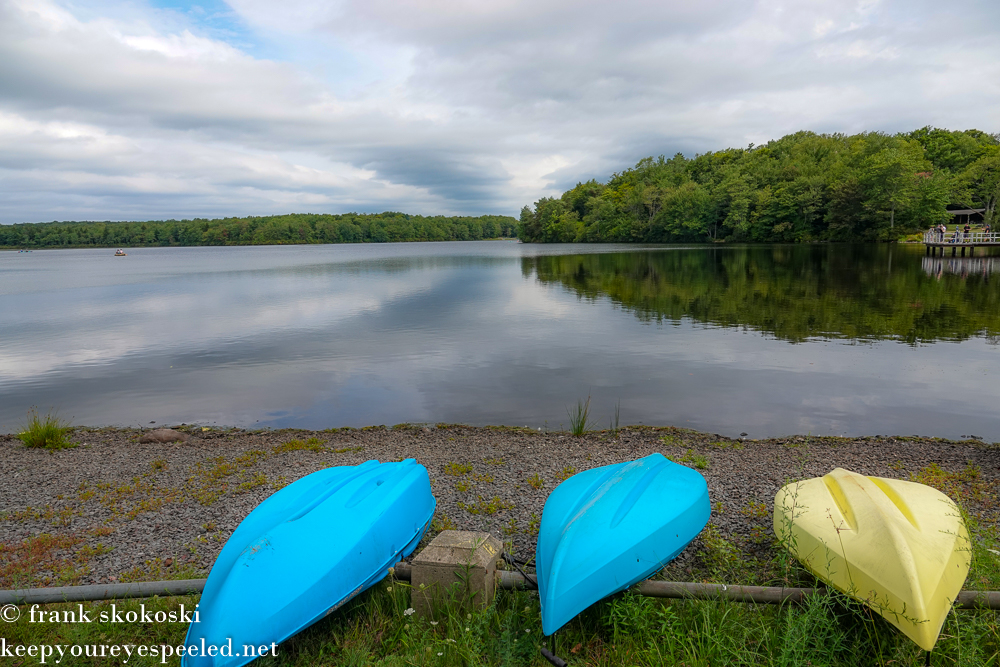
Well I didn’t hike in the Susquehanna Wetlands this past Saturday. I changed my usual routine. Instead, I hiked in Tobyhanna State Park. Located in Monroe County it is about 55 miles from my home in Luzerne County. It was my first hike in this park. My pursuit of the elusive black bears brought me there. Some friends were camping here the previous weekend and saw a large black bear three times. They were told this bear is becoming a nuisance and may have to be removed. Well I decided to try and get some photos before they removed him. And, of course, I love exploring a State Park I haven’t visited before. 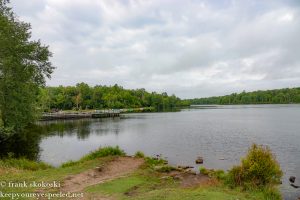
Tobyhanna State Park I learned, is a 5500 acre park that was once part of a military artillery range from 1914 to 1941. Unexploded shells can still be found in the remote areas of the park. The Commonwealth of Pennsylvania re-acquired the land in 1949 and created Tobyhanna State Park, State Game lands 127 and Gouldsboro State Park. I also learned the Tobyhanna is a Native American word for ” “a stream whose banks are fringed with alder.” There is a scenic 170 acre lake in the park. 
I was eager to explore the park, and find the bear, when I arrived at the boat launch park around 8:30 a.m. It was mostly cloudy and a pleasant 70 degrees when I began my hike on the Lakeside Trail. The trail was well maintained as it followed the shore of the lake toward the beach and camping area. 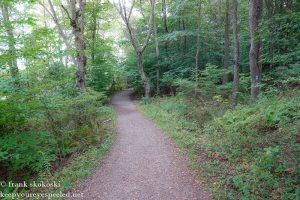
The clouds began to break up as I approached the beach. 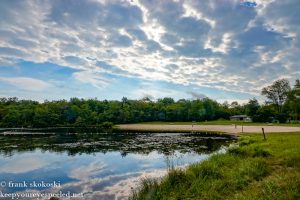
I walked past the empty beach and continued in the direction of the camp grounds. I was hoping to see the bear that has been annoying the campers.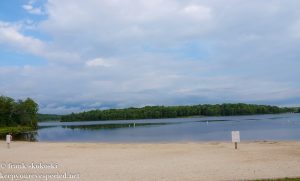
After I left the beach area, and followed the trail into the woods, I noticed that many of trees along the trail were second growth red maple, yellow birch and some pine trees . I was surprised there were almost no oak trees in these woodlands. I don’t usually hike in these type of woods.. Most of the woods near my home are primarily oak. 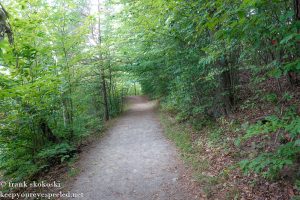
There were some late summer wildflowers blooming along the trail, including a few species of goldenrod. I never knew there were so many different types of this late Sumer flower until I got my plant identification iPhone app , It tells me I saw some grass-leaved goldenrod at the beginning of my hike , and that I also saw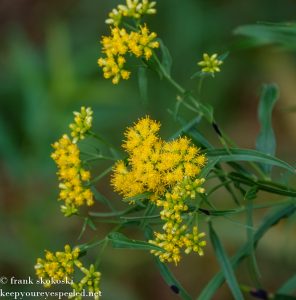
gray goldenrod later on my 6 mile hike. 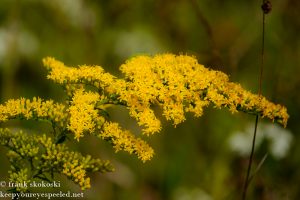
I saw this prairie fleabane flower and 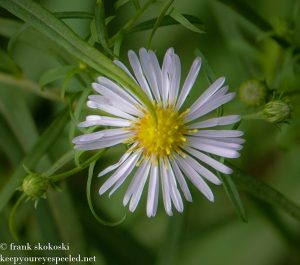
these parasol whitetop aster, and, 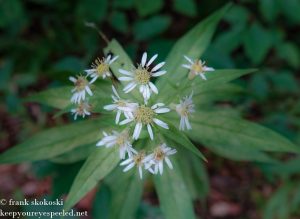
these white wood asters which were everywhere along the trail throughout my six mile hike. 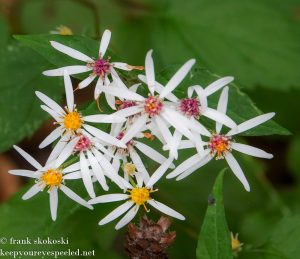
There were not man birds singing in the treetops. Many of the migratory song birds have already flown south. I did see this red-eyed vireo,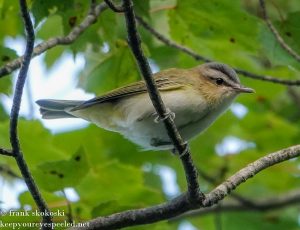
this white breasted nuthatch and 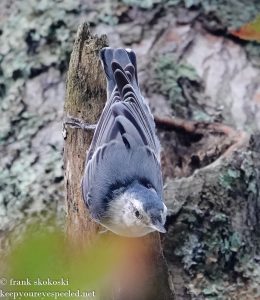
this gray catbird along the trail. 
The trail brought me to an access road to the park. It took me to a bridge that crossed over a wetland where the creek enters the lake.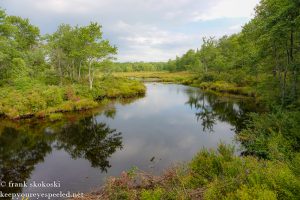
Here I saw this great blue heron wading in the waters edge, 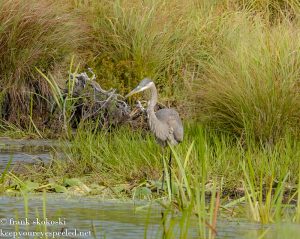
and I these pretty bottle gentian flowers in the wetlands. 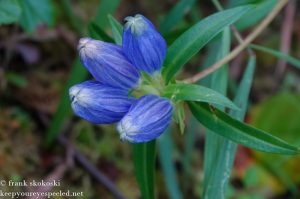
I continued to follow the Lakeside Trail , but left it and walked in to the campgrounds with the hope of seeing the bear. It had been seen roaming around the pavilions looking for leftovers. I was disappointed he wasn’t there on Saturday so I left the campgrounds and continued my hike .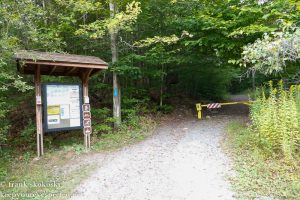
The woodlands along the trail were still dominated by maple trees but there were also a lot of large black cherry trees. I haven’t seen this trees since my visit to God’s Country in Potter County last year. 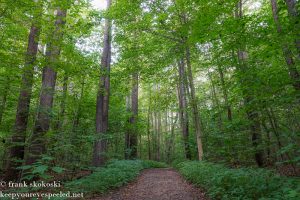
There were also some of the largest yellow birch trees I had ever seen growing along the trail .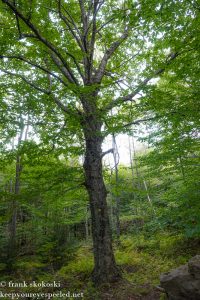
There were a lot of folks using the trail, at first it was only runners and bikers, but later I would see large groups of young campers hiking on the trail with their elders. It was nice to see young folks experiencing nature. 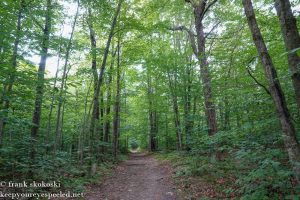
There were also some wild critters in the woodlands along the trail, I heard a lot of chipmunks, saw a few squirrels,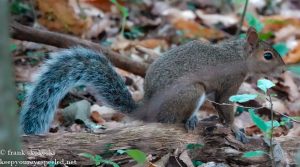
including this curious young buck who was watching me as I walked past. 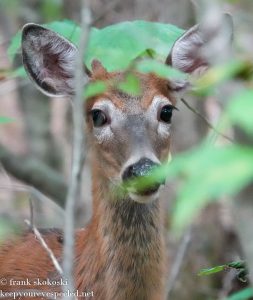
I was surprised there weren’t many birds in the woods along the trail. I heard some more red-eyed vireos, some eastern wood peewees and black-capped chickadees but none came near the trail except this red-bellied woodpecker. 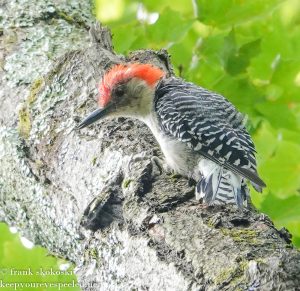
The trail kept taking me away from the lake. There was no cell service and I had no map so I wondered if I was on the right trail. It sure wasn’t along the lake. I was relieved to finally see this sign and knew I was on the right trail. 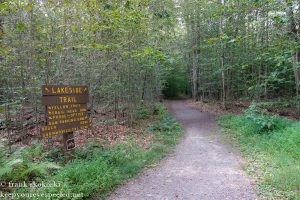
The trail now turned and was now taking me back to the lake. There were now more pine and beech trees in the woods along the trail but it was still a mainly maple, birch and black cherry forest. 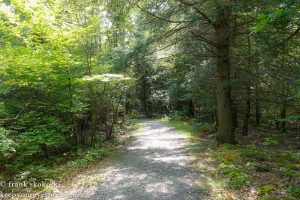
I was hoping to maybe find some edible mushrooms growing on my hike, but the ones I know to be good edibles grow in oak forest. I did see some mushrooms on my hike, including some false chanterelles, 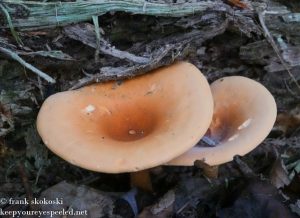
some type of philota mushroom, 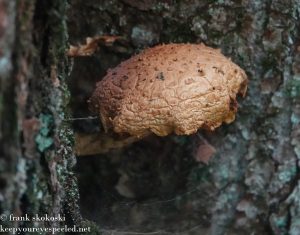
this carrot footed amanita. I do not believe any of these are edible. 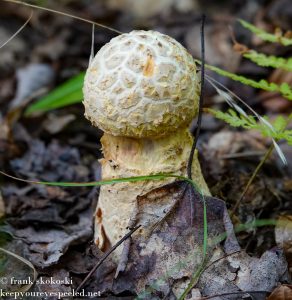
The only wildflower growing on the trail were many clumps of white wood asters and these Canadian wood nettles. 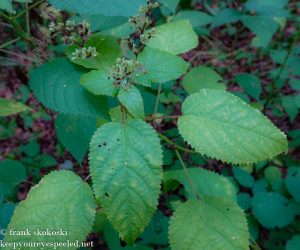
There were a lot of ferns along the trail including these interrupted ferns 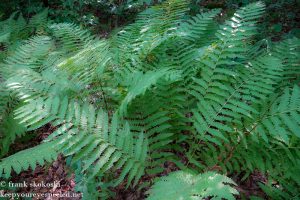
and these eastern hay-scented ferns. 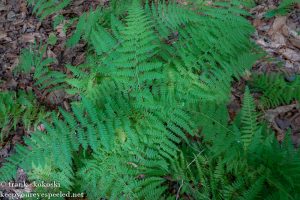
And I saw some interrupted club moss, another plant I haven’t seen since my visit to Potter County. 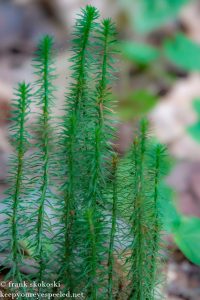
After about 4 miles the trail brought me back to the far side of the lake. There were many folks enjoying this portion of the trail. 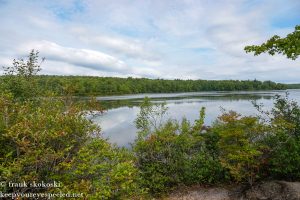
I finally walked along the scenic lake again, where I saw few people in boats and kayaks on the lake. 
Along the lake I saw many of the wildflowers I had seen earlier and a lot of milkweed plants.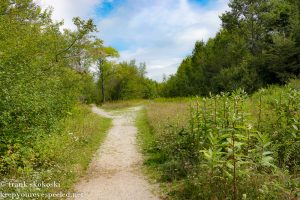
I inspected dozens of these plants looking for monarch butterfly caterpillars. Sadly, I didn’t see a one of these now endangered monarch butterfly caterpillars. . 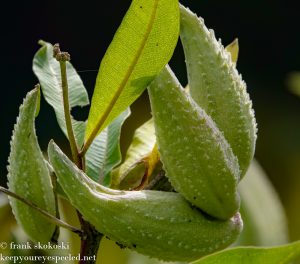
I only saw this one tussock moth caterpillar in the large patches of milkweed.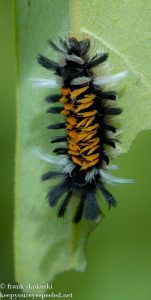
I also saw these alder buckhorn berries near the dam. These trees are invasive, and are not the same alder trees that the Native Americans would have seen. Here is a link to a gallery with some more photos of the flowers and mushrooms I saw on my hike. Tobyhanna State park flowers and mushrooms September 3 2022. 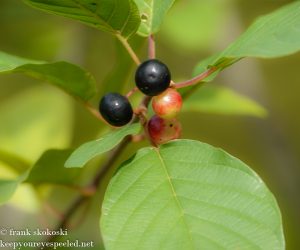
The trail took me past the dam on the lake, 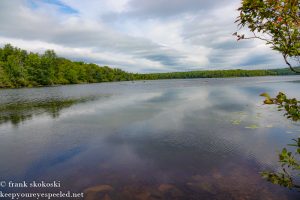
and back to the boat launch area where I parked my Jeep.
The boat launch area was empty when I arrived but was now o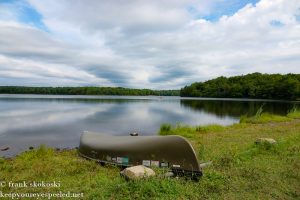 verflowing with people and vehicles enjoying this last unofficial weekend of Summer. I didn’t see the bear, but I enjoyed my 5.8 miles around the lake. I will visit again, but not during mushroom season. I need to hike in oak woods to find the edible mushrooms I enjoy. Here is a link to a gallery with some more photos from my 6 mile hike. Tobyhanna State Park September 3 2022.
verflowing with people and vehicles enjoying this last unofficial weekend of Summer. I didn’t see the bear, but I enjoyed my 5.8 miles around the lake. I will visit again, but not during mushroom season. I need to hike in oak woods to find the edible mushrooms I enjoy. Here is a link to a gallery with some more photos from my 6 mile hike. Tobyhanna State Park September 3 2022.
A lake
Henry David Thoreau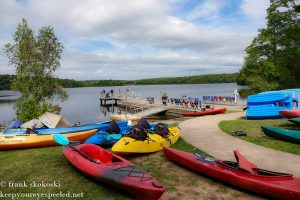 is the landscape’s most beautiful and expressive feature. It is earth’s eye; looking into which the beholder measures the depth of his own nature.
is the landscape’s most beautiful and expressive feature. It is earth’s eye; looking into which the beholder measures the depth of his own nature.
Tags
Categories
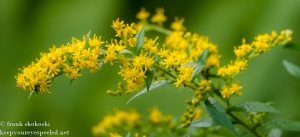
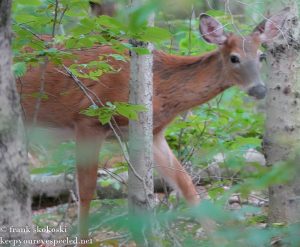
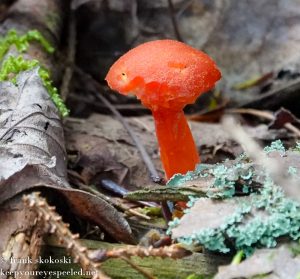
Recent Comments